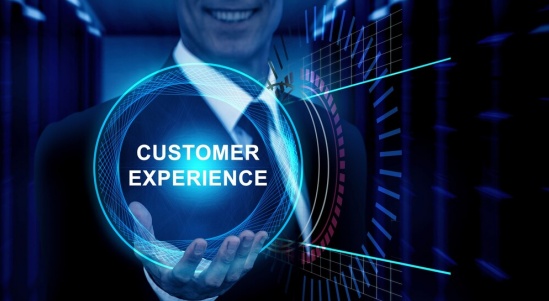- Resources
- What Is a Customer Data Platform? Top CDPs to Look for in 2024
What Is a Customer Data Platform? Top CDPs to Look for in 2024

With 83% of adults using their phones to shop online, engaging with customers has become easier than ever. However, only 42% of firms provide two or more support channels, indicating that more than half of organizations still need a platform that connects consumer conversations across all channels. Companies can only accurately view the customer journey if they have the capabilities to collect and process customer data.
That’s why implementing centralized, enterprise-level customer data platforms has become an urgent strategic priority. IT leaders recognize customer data management as instrumental in driving growth, retention, and innovation – setting their companies apart today and into the future. When leveraged to its full potential, customer data can mean the difference between simply surviving and completely thriving in the modern digital marketplace.
Read along as we discuss more about what a CDP is and how it works, and also mention some of the best CDP platforms to invest in.
In this article, we will explore:
- 1. Overview of Top Customer Data Platforms
- 2. What Is a Customer Data Platform?
- 3. How Do CDPs Work?
- 4. Types Of CDPs
- 5. Importance Of CDP
- 6. Benefits Of Using CDP
- 7. CRM Vs DMP Vs CDP
- 8. How Is CDP Different From Customer Intelligence Platforms?
- 9. Selecting the Best CDP: Key Factors
- 10. Top CDP Platforms
Overview of Top Customer Data Platforms
Before diving into the details of customer data platforms, let’s take a moment to understand their significance. Below, you’ll find a concise overview of the leading platforms, including their ratings and the industries they cater to:| Customer Data Platform | G2 Rating | Best For |
|---|---|---|
| Bloomreach | 4.7/5 | E-commerce personalization and optimization |
| FirstHive | 4.4/5 | Integrated customer engagement across channels |
| Segment | 4.6/5 | Data segmentation and analytics for targeted marketing |
| SALESmango | 4.4/5 | Sales-centric customer data management |
| Totango | 4.4/5 | Customer success and retention strategies |
| Lytics | 3.9/5 | Marketing campaigns and audience segmentation |
| mParticle | 4.4/5 | Multi-channel data orchestration and activation |
What Is a Customer Data Platform?
A Consumer Data Platform (CDP) is a software application that collects and organizes consumer data from several touchpoints. CDPs collect and structure real-time data into unique, centralized customer profiles, supporting marketing and customer experience efforts with actionable insights.
A CDP typically consists of a client database, multichannel campaign management, marketing automation, and real-time interaction management. Essentially, CDPs are used when you require a marketing database containing user-level data. To better comprehend this software category, consider some underlying marketing issues that contributed to its prominence.
How Do CDPs Work?
A CDP links to a variety of technology platforms, data sources, and channels via built-in connectors, SDKs, webhooks, and APIs. They collect and combine data from various sources, including profile and real-time interaction data (behavioral and transactional data), campaign and product data, customer support data, point-of-sale, marketing, device, and internet-of-things (IoT).
A customer data platform collects and integrates these data sets to build a single, unified customer profile. This integration procedure is known as identity resolution or data unification. Customer identification resolution entails using advanced algorithms to connect identifiers from various systems, as well as automating graph generation and continuously integrating data into a profile as customers interact in real-time.
Types Of CDPs
It is not possible to lump all CDPs into neat little categories; it needs to be more intricate. Still, we can map out the four major types of customer data platforms and see where it takes us.
CDP Engines and Toolkits
This solution enables firms to adjust their CDP to specific organizational needs that may be beyond the capability of even the finest CDP systems. In general, these engines and toolkits are more technical solutions IT teams use to create tailored apps on top of an existing CDP.
If you’re not a tech genius, these solutions are less user-friendly and popular than the other CDPs we’ll discuss next. They also have higher prices. Most firms do not require this level of customer data management for their use cases, but some employ these solutions to go above and beyond the capabilities of most CDPs, making it worthwhile.
CDP Smart Hubs
The marketer’s dream: a plug-and-play CDP that prioritizes personalization and execution — all from a single source. CDP smart hubs are smart because they can time and tailor responses depending on user behavior and event data. When a user takes an action, the smart hub generates a response based on that user’s behavior. Smart hubs analyze user data and make predictions based on real-time analytics to tailor the customer journey to the specific needs of a single consumer.
Marketing Data-integration CDPs
These solutions focus on data operations, meaning they have extensive data processing and governance features that would make any geek happy. Yet, they’re all housed in a non-technical, user-friendly interface. IT and marketing teams can work together seamlessly in these CDPs.
This CDP type is equally effective for activating and delivering segmented campaigns to numerous channels, but it needs full analytics views, which dulls decision-making. What’s most useful is that marketing data-integration CDPs prioritize the fundamental aim of CDPs: organizing first-party data to build single customer perspectives.
Marketing Cloud CDPs
Larger corporate software vendors have developed and implemented their own CDP systems. The main appeal, of course, is for these enterprises to integrate and improve the capabilities of their existing toolsets. If you have a lot of Adobe products, Adobe’s CDP works well with them. These all-purpose marketing cloud CDPs are useful if you work in the corresponding system.
Proprietary software is notoriously picky about not collaborating with others (which is why open CDPs should be considered). The primary notion is that marketing cloud CDPs collect and manage data, organize it into distinct single-customer perspectives, and connect it all to relevant tools within their software ecosystems.
Importance Of CDP
CDP collects data from a variety of online and offline sources, including purchase history, social media involvement, website engagements, and human interactions. Using this data, it generates client profiles that provide a 360-degree customer view
Here’s why CDPs are essential for your organizational growth
Streamlines Marketing Strategies
Marketing initiatives are only effective if they are carefully curated to consider your customers’ choices and interests. With insights from detailed client profiles, you can precisely target certain customer segments, ensuring that marketing communications are appropriate to the recipients. CDPs play an important role in optimizing resource allocation and boosting campaign effectiveness.
The consolidated data of customer data platforms allows you to reduce wasted expenditure on irrelevant audiences while increasing your marketing initiatives’ return on investment (ROI). Focusing on people most likely to convert allows you to invest resources effectively and analyze campaign success more accurately.
Empowers Data-driven Decision-making
Making data-driven decisions is critical to success in today’s corporate environment. A CDP is a comprehensive data management platform that provides you with consumer data and insights, helping you make data-driven decisions. Analyzing data will assist you in identifying trends, client segmentation, and ways to improve your products or services.
You may also assess the efficacy of your marketing initiatives and modify them to reflect shifting market trends. Furthermore, CDPs aid in forecasting and scenario planning, helping you to adapt to difficulties and capture opportunities proactively. CDP insights act as a compass, guiding strategic decisions and assuring your company’s agility and competitiveness in an ever-changing environment.
Assists in Designing Customer Journeys
It’s simple: greater customer experience leads to more customer satisfaction and, eventually, more business. CDPs play a crucial role in providing an amazing customer experience. CDPs let you provide recommendations and messages to clients relevant to their interests and previous interactions.
Taking a client-centric approach and providing a personalized experience is an effective customer service trend that results in higher customer lifetime value. Satisfied customers are more inclined to return and recommend the brand. CDPs enable businesses to harness massive amounts of consumer data, transforming it into a tangible asset for creating personalized and engaging customer journeys.
In addition, CDPs can provide insights into potential red flags or signals of customer unhappiness, allowing for proactive efforts to address issues and reduce churn. Customers who feel listened to and worried are more inclined to stick with the brand, enhancing customer retention.
Benefits Of Using CDP

CDPs offer several advantages, but they can generally be classified in one of three ways:
Increase Operational Efficiency
CDPs give enterprises the tools to boost team productivity and streamline procedures. This could include allowing business teams to self-serve insights so that technical teams can concentrate on higher-value initiatives, modernizing a marketing technology stack to minimize redundancies and maximize spending, and giving teams more agility for strategy iteration.
Improve and Extend Revenue Streams
CDPs give enterprises the customer insights they require to capitalize on growth opportunities and accelerate time to market. This could involve improving revenue by optimizing customer acquisition or enhancing customer lifetime value (CLTV), as well as lowering marketing expenses through better audience targeting and faster conversion rates.
Deliver Superior Experiences
CDPs enable enterprises to gain deeper visibility into their consumers across channels and deliver captivating CX at the correct time and place. This could involve lowering churn by recognizing and engaging at-risk clients, tailoring experiences to foster brand loyalty, and improving omnichannel interaction to boost customer satisfaction.
Drive Conversions
CDPs enable the aggregation of data across channels and touchpoints, allowing businesses to gain comprehensive insights into customer behavior and preferences. Companies can segment their audience more effectively and create highly targeted marketing campaigns. As a result, businesses can drive higher conversion rates and revenue growth by delivering personalized experiences that resonate with their audience on a deeper level.
Foster Customer Loyalty
Every business owner wants to see their consumers select them repeatedly, right? This magic is feasible if you have a high customer retention rate. Understanding your customer’s requirements and preferences is essential for high retention rates. Once you have the information, you can adapt your offers and communications to meet your consumers’ expectations. CDPs are more than support solutions like Zendesk, which allow you to find solely support-related data.
CRM Vs DMP Vs CDP
The major distinction between a Data Management Platform (DMP), Customer Data Platform (CDP), and Customer Relationship Management (CRM) is the purpose for which client data is stored and managed. Each platform uses data differently, whether it’s to manage existing customers, market to new consumers, or integrate that information to build a unified customer profile. Here’s a more detailed overview of the differences between the three:| Criteria | CRM | DMP | CDP |
|---|---|---|---|
| Primary Purpose | Manage customer interactions, sales, and service | Aggregate and manage audience data for targeted advertising | Unify customer data from various sources for personalized marketing and engagement |
| Data Sources | Customer interactions, transactions, and communication history | Third-party data, behavioral data, and demographic data | Various first-party and third-party data sources, including online and offline channels |
| Data Focus | Individual customer profiles and relationships | Anonymous or pseudonymous audience segments for targeted advertising | Unified and comprehensive customer profiles |
| Data Unification | Focus on internal customer data for a 360-degree view | Aggregation and segmentation of data for advertising purposes | Unify and connect data from various touchpoints to create a unified customer profile |
| Use Cases | Sales, marketing, and customer service optimization | Targeted advertising and audience segmentation for campaigns | Personalized marketing, customer engagement, and analytics |
| Integration | Integrates with various business systems like sales, marketing, and customer support | Often operates independently and integrates with demand-side platforms (DSPs) | Integrates with multiple data sources and marketing tools to create a unified view |
| Customer Engagement | Focuses on improving customer interactions and relationships | Primarily used for targeted advertising and campaigns | Aims to enhance customer experience through personalized interactions across channels |
| Data Privacy | Typically contains sensitive customer information, subject to privacy regulations | Focuses on aggregated, non-identifiable data for targeting ads | Adheres to data privacy regulations while creating unified customer profiles |
| Real-time Capabilities | Supports real-time updates on customer interactions and transactions | Emphasizes real-time bidding and targeting for advertising | Often designed for real-time data processing and engagement |
| Examples | Salesforce, HubSpot, Microsoft Dynamics | Adobe Audience Manager, BlueKai, Lotame | Segment, Tealium, Lytics |
How Is CDP Different From Customer Intelligence Platforms?
Customer data platforms primarily focus on unifying customer data from various sources into one customer profile. This includes behavioral data like website interactions, mobile app activity, purchases, and other touchpoints. The unified profiles support targeted marketing use cases – like personalized campaigns, predictive modeling, and measurement. So, CDPs are heavily leveraged by marketing teams and centered around marketing execution.
CIPs (customer intelligence platforms) also bring customer data together. However, they have more expansive data management features to connect and model behavioral, transactional, demographic, location, and third-party data. This 360-degree view of the customer powers deeper analytics – from visualizations and customer segmentation to predictive scores, journey mapping, and market basket analysis. These intelligence capabilities support wider business decisions related to customer retention, lifetime value, product recommendations, and more.
In essence, CDPs concentrate on building rich, actionable marketing profiles of customers. CIPs apply intelligence across the customer dataset to uncover strategic insights that inform executive-level decisions across sales, marketing, operations, pricing, and beyond. While CDPs optimize campaign execution, CIPs optimize the decision-making process enterprise-wide. So, CIPs could be considered supercharged CDPs with advanced analytics and more expansive use cases to guide businesses.
Selecting the Best CDP: Key Factors

Your business’s demands and ambitions will determine the appropriate platform for your team. Consider what issues you must resolve or what processes you need to improve. Some other factors that you should consider are:
Custom Audience Segmentation
The top CDPs enable you to build custom audiences from any data point. This allows you to create targeted campaigns that target customers via email, search engines, and social media.
Data Integrations
The most effective consumer data platforms combine information from your mar-tech and ad-tech stacks. As a result, your preferred CDP should be able to absorb and activate data from your existing tools in real-time.
Security and Privacy Compliance
The largest privacy sanctions have resulted in fines of more than $1 billion. Check that your CDP is secure to avoid getting into trouble. Confirm a CDP’s security and privacy requirements by looking for certifications such as ISO 27001, ISO 27017, ISO 27018, CSA Star, and GDPR Seals.
Advanced Analytics
Marketers typically have more data than they need. So, when constructing or purchasing a CDP, look for one that includes powerful data analytics tools and AI-powered analysis. This enables marketers to develop dashboards with important metrics. Make sure you can export this data so you can share it with other team members.
Identity Resolution
Identity resolution refers to a CDP’s capacity to comprehend how customers engage across numerous channels, devices, and touchpoints. This essential component enables CDPs to leverage a customer’s history to generate a single user profile.
Top CDP Platforms
To assist you in selecting the best CDP for your company, we have narrowed the options from hundreds of platforms on the market today. Here are the top 7 customer data platforms of 2024:
Bloomreach

Bloomreach’s platform is designed to merge standard CDP functions with content management and search. The goal is to connect the numerous omnichannel outreach tools with well-curated online content supported by a powerful search engine. Potential clients can discover products intelligently thanks to an intelligent search engine that includes semantic understanding and synonyms. In the meantime, an automatic SEO engine distributes information onto the broader web.
A drag-and-drop editor generates “personalized omnichannel journeys” that link with a variety of databases and APIs. This contains all of the core backend underpinnings, such as PostgreSQL, as well as important products like Salesforce and QuickBooks. Some typical webhooks can help you connect with any other platform. The headless CMS at its core is compatible with major e-commerce systems such as Shopify.
| Pros |
|---|
|
| Cons |
|---|
|
FirstHive

FirstHive, one of the first CDPs to leverage machine learning, has provided favorable outcomes for its users regarding marketing metrics. It uses machine learning algorithms to create unified customer IDs from data collected from various sources. One of the main benefits of FirstHive is that it allows you to handle client data while remaining compliant with privacy standards. Another feature is its deep learning capabilities, which allow it to gather data from unstructured sources and generate deep insights through predictive analytics.
| Pros |
|---|
|
| Cons |
|---|
|
Segment

Segment provides the data foundation required to transform your organization into a customer-centric brand. Collect, organize, and leverage your customer data across multiple touchpoints to make real-time decisions that improve customer experience.
Twilio Segment enables you to build a data toolset for your teams in one simple platform. Marketers gain a single perspective of their customers and may interact with them in real-time. Product development teams can use data to better understand what customers require. Engineering teams can implement custom functions and tools on any platform.
| Pros |
|---|
|
| Cons |
|---|
|
User Review: The Segment’s strong partner ecosystem and account team help us succeed.
G2 rating: 4.6/5
SALESmanago

SALESmanago is one of the most popular CDPs today, distinguishing itself from the competition with its no-code AI-driven platform. It is a single agile platform that includes customer experience optimization, customer data management, and marketing automation.
With SALESmanago, you can provide hyper-personalized consumer experiences across numerous channels. The platform processes both zero and first-party data using AI, big data analytics, and ML. It includes numerous tools and capabilities for email and social media marketing, campaign management, lead management, and reporting and analytics.
| Pros |
|---|
|
| Cons |
|---|
|
User Review: The best marketing tools for multi-channel communication and automation.
G2 rating: 4.4/5
Totango

Totango, a client Success platform, provides real-time access to client data, allowing you to take proactive approaches while nurturing them at every touchpoint. To optimize the consumer journey, Totango offers both adaptability and scalability, making it a favorite among startups and scaleups. The platform may be integrated with your existing tech stack, allowing you to manage all areas of customer engagement from one dashboard.
| Pros |
|---|
|
| Cons |
|---|
|
Lytics

Lytics uses ML and data science to help data teams, and marketers optimize campaigns across multiple channels. The software provides a comprehensive consumer view and data-driven insights for campaign optimization. Use intuitive technologies for client activation, audience segmentation, and online personalization, among other things. This CDP also increases your marketing tech stack, integrating over 80 downstream technologies.
| Pros |
|---|
|
| Cons |
|---|
|
mParticle

mParticle is a basic yet robust CDP that offers an easy-to-use UI that allows for seamless integration. It is used by marketers and data analysts to collect and combine client data from many channels.
As an infrastructure CDP, mParticle may be swiftly installed across several systems to assist teams in better managing data quality. It is useful for developing product roadmaps, tracking customer journeys, and planning marketing efforts. Its tools include multichannel data collection, predictive analytics, campaign management, and sentiment tracking.
| Pros |
|---|
|
| Cons |
|---|
|
Conclusion
A customer data platform may be the appropriate choice for your firm if you want to improve the overall customer experience with data-driven insights while also making your marketing operations more nimble and efficient. A CDP can combine customer data from several channels and silos to generate a single customer perspective that can be used as the single source of truth throughout your organization. This single perspective enables marketing, service, and sales teams to effortlessly evaluate customer data and identify key segments, resulting in more relevant, contextual, personalized, and consistent messages.
Want to see what Ozonetel can do for your company? Sign up today for a free 21-day trial.
Frequently Asked Questions
The four main types of customer data include demographic information such as age, gender, and location, behavioral data like website visits and purchase history, transactional data such as order details, and psychographic data including interests and preferences.
A Customer Data Platform (CDP) functions as a centralized system for collecting, organizing, and managing customer data from various sources like CRM systems, marketing platforms, and website analytics tools. It creates unified customer profiles that enable businesses to deliver personalized experiences and targeted marketing campaigns.
The purpose of a Customer Data Platform (CDP) is to consolidate fragmented customer data from disparate sources into a single, unified view. By providing a holistic understanding of customer behavior and preferences, CDPs empower businesses to deliver more relevant and personalized experiences, drive customer engagement, and increase conversions.
Prashanth Kancherla
Chief Operating Officer, Ozonetel Communications
Over the past decade, Prashanth has worked with 3000+ customer experience and contact center leaders...
Chief Operating Officer, Ozonetel Communications
Over the past decade, Prashanth has worked with 3000+ customer experience and contact center leaders to comprehensively understand the need for effective and efficient customer communications at every step of their journey with a brand. Deeply embedded in today’s CCaaS ecosystem, he has been instrumental in Ozonetel's growth and contributed in various roles including product management, sales, and solution architecture.







